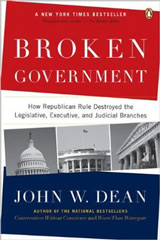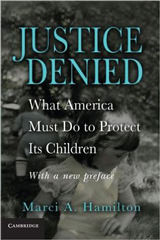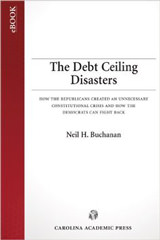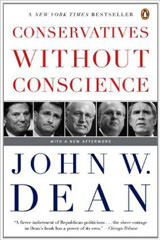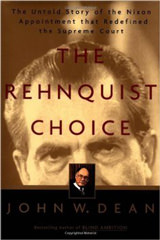Justia columnist and U. Washington law professor Anita Ramasastry discusses two controversial online business practices: steering, and differential pricing. Steering, which the travel site Orbitz has used, directs potential customers to options that they may be likely to choose, based on other information the site knows about the customer — for instance, whether he or…
Justia columnist and U. Washington law professor Anita Ramasastry comments on the lessons to be learned from the recent experience of Skout, which initially offered teen and adult flirting sites and apps. In the wake of three separate allegations by teens of rape by an adult whom they met via Skout and who was posing as a teen on the site, Skout has closed down its teen site and app. Ramasastry notes that Skout was always vigilant about the risk of adults impersonating teens, but vigilance, in the end, wasn’t enough. Thus, Ramasastry raises the possibility that society—and especially teens’ parents—should discourage teen meet-up business models that carry the kind of risks that Skout’s teen site did.
Justia columnist and U. Washington law professor Anita Ramasastry comments on the legal implications of Facebook’s reported plan to allow under-13 children to join the site. (Officially, under-13 children now cannot join, although that policy is often honored in the breach.) Ramasastry comments on why Facebook is now seeking out the under-13 crowd; notes the strictures of the Children’s Online Privacy Protection Act (COPPA) and how they may apply here; and describes how the Federal Trade Commission (FTC) has enforced COPPA against other websites in the past. Ramasastry also comments on some of the possible downsides of letting under-13 children officially join Facebook, if that becomes possible—including children’s immaturity when it comes to posting, and the ways in which Facebook may use children’s information, in part by marketing to them. She also raises the question whether Facebook users will truly want a Timeline that lasts a lifetime, or whether they may want to ignore or forget some of the indiscretions and immaturity of their youth. Finally, Ramasastry advises parents on measures they may want to take soon, before the new under-13 Facebook kicks in.
Justia columnist and former counsel to the president John Dean comments on a new proposed New York statute, the Internet Protection Act, which would provide a remedy for those who are the targets of anonymous Internet attacks—including the victims of cyberbullies, and businesses harmed by competitors’ fake reviews. Dean notes that the Act has drawn much criticism, but he argues that the focus of comments on the Act should not be to attack the Act, but rather to offer constructive criticism as to how the Act can be made consistent with the First Amendment. Dean summarizes the First Amendment arguments that have been raised regarding the Act; cites two key Supreme Court anonymous speech cases; notes that it is often possible to unmask cyberbullies without breaking the law, but it takes time and money to do so; and contends that a constitutional way to address cyberbullying would be through a law allowing the unmasking of the perpetrators of Internet harassment, and the issuance of a protective order against them. Even the deterrent effect of such a law, Dean predicts, could be powerful.
Justia columnist and U. Washington law professor Anita Ramasastry comments on a recent First Amendment/Internet law ruling from a Utah-based federal judge. As Ramasastry explains, the ruling limited the scope of a a Utah law that (1) criminalized knowingly or intentionally disseminating harmful content to minors over the Internet, and (2) required website operators to tag or label such content in such a way that the tags or labels can be picked up by search engines. Ramasastry argues that the court struck the right balance by upholding but clarifying the first part of the law, and striking down the second part on First Amendment grounds. When it comes to screening content, she adds, the best solution is not a legal one. The better solution is, she argues, for parents to select screening software if they so choose; and for parents to have a serious talk with their kids to prepare them to deal psychologically with the kind of explicit material that they are likely to see, one way or another, even if parents do install screening software on all home computers.
Justia columnist and attorney Julie Hilden comments on a recent decision from an Eastern District of Virginia federal judge, who effectively held that the use of the “Like” icon on Facebook is not protected by the First Amendment. The case arose when the employees of a sheriff who was up for re-election decided to “Like” his opponent’s Facebook page. Once the sheriff was re-elected, he fired those employees (as well as others). But the fired employees who had used the “Like” icon sued, arguing that the sheriff had illegally fired them for the exercise of their First Amendment rights. Hilden takes issue with both the judge’s decision to rule against the fired employees, and his approach to the case, which caused him to refuse to interpret what the Facebook “Likes” meant. Citing Supreme Court precedent, Hilden notes that the High Court has often protected and interpreted symbolic speech, and that the Court, in the recent case of Morse v. Frederick, has interpreted the meaning of ambiguous speech as well. She thus concludes that the judge should have both interpreted the “Likes,” and also held that they were First Amendment-protected.
Justia columnist Anita Ramasastry comments on the legal issues that may arise from MissTravel.com, a website that says that it matches “generous travelers who hate to travel alone with attractive travelers who would love the opportunity to travel the world for free.” The site has been compared to an online escort service, although the site itself argues that the analogy is unfair. Ramasastry considers the legal issues that may arise from the Miss Travel site—focusing both on (1) whether the site could get in trouble if illegal activity ensues, and (2) whether there is any recourse if the companion of the “generous traveler” gets into hot water when the two are overseas. Ramasastry also notes that state Attorneys General have gone after online escort ads’ host sites, but that such sites are generally immune from civil liability for user postings under the Communications Decency Act (CDA). Still, Ramasastry notes, under certain circumstances such sites might be hit with criminal charges if they knowingly induce prostitution. She notes, however, that Miss Travel is importantly different from such sites.
Guest columnist and Justia writer and editor David Kemp comments on a new development on Facebook: users’ ability to add the fact that they have become organ donors as a “Life Event” on their Timelines. Kemp notes that the reason for this development is to encourage organ donation after death—and that it’s been very successful in doing so. He also comments on three likely reasons why Facebook chose this particular cause, as opposed to all the other causes that it might have promoted. While applauding the feature’s benefits, Kemp also considers some risks connected to the use of Facebook in this way—including the risk that other medically-related applications may lead to the disclosure of private health information, which could potentially implicate federal privacy laws. (Already, the “Life Events” application, Kemp points out, can reveal a broken bone or weight loss.) Ultimately, Kemp raises the question whether Facebook may evolve in such a way as to provide not just social networking, but also social engineering.
Justia guest columnist Anjali Dalal, Postdoctoral Associate in Law and Google Fellow, Information Society Project at Yale Law School, comments on the Cyber Intelligence Sharing and Protection Act (CISPA). Dalal argues that while cybersecurity is a very genuine concern for the U.S., CISPA’s approach is not the way to address that concern. Dalal makes four key points to support her thesis, contending that (1) CISPA could reach common, otherwise legal Internet activities; (2) that information received from private companies under CISPA could be used for purposes other than cybersecurity; (3) that CISPA appears to effect an end-run around the Fourth Amendment; and (4) that CISPA subordinates civil-liberties protections to national security concerns. Dalal also describes the next steps that we are likely to see in the battle over CISPA.
Justia columnist and U. Washington law professor Anita Ramasastry comments on the phenomenon of Internet mug shot galleries. Unlike a Megan’s Law database, Ramasastry explains, these galleries show photos of arrestees, who have not yet been, and may never be, convicted of any crime. That raises fairness issues, Ramasastry argues. Moreover, she notes that not only police departments, but also private companies, collect such photos together into mug-shot galleries. Because the private companies’ galleries tend to dominate search results, arrestees have no recourse except to pay the private companies to take down the photos. Because of issues like these, Ramasastry argues that this is an area that is ripe for reform—for you can now be exonerated in court, but not on Google. She also briefly discusses the phenomenon of police departments putting mug shots on their Facebook pages.
Justia columnist and U. Washington law professor Anita Ramasastry comments on the “Girls Around Me” app, which Apple has now pulled from the iTunes app store, and Foursquare has also pulled. As Ramasastry notes, concerns were raised that the app—which showed photos and information taken from Facebook and Foursquare—could compromise privacy and enable the harassment of women. Ramasastry contends that in order to address such concerns, some websites’ Terms of Use need to be clarified, and we need to carefully consider the extent to which third-party developers can use, harvest, and manipulate data relating to individuals and their lives. She also calls for a federal law to better protect consumer privacy, including in the context of apps like these, and warns that laws and policies must take notice of the context in which a person’s information is being used, for some uses may be innocuous, and others pernicious.
Justia columnist and U. Washington law professor Anita Ramasastry comments on the emerging law relating to whether potential employers may ask job applicants for their Facebook (and other social-media) passwords. Ramasastry describes efforts at both the federal and state level to prevent such practices, and to preserve the privacy of Facebook (and other social-media) users. In addition, she argues that these practices should indeed be illegal (to the extent that they are not already), in part because they may facilitate illegal discrimination. Ramasastry notes that two court decisions in this area of law sided with social-media users and against employers. She also points out that Facebook itself seems to be on the side of users who would like to keep their Facebook postings private from potential employers, but argues that Facebook users are still well advised to scrub their profiles of information and photos that might make a future employer balk.
Justia columnist and U. Washington law professor Anita Ramasastry comments on the “Kony2012” 30-minute video, which recently received over 75 million views on YouTube and film-sharing site Vimeo—with even the White House taking notice. As Ramasastry explains, the video is a profile of the brutal warlord Joseph Kony, leader of the Lord’s Resistance Army, who is wanted by the International Criminal Court for his war crimes. Kony, a native Ugandan, mounted a war against Uganda’s government, using tactics including the recruitment of child soldiers and the commission of atrocities. Ramasastry covers Kony’s crimes; notes the praise for, and criticism of, the “Kony2012” video; and concludes that, despite some drawbacks and criticisms, the “Kony2012” video has proven to be an effective way to exert pressure for justice to be done.
Justia columnist and attorney Julie Hilden comments on a recent Louisiana federal district court decision striking down an extremely broad and vague law prohibiting registered sex offenders from accessing a large variety of websites. Hilden argues that the judge’s decision, which followed a bench trial, was plainly correct under First Amendment case law. Accordingly, she contends that Louisiana Governor Bobby Jindal is likely using the law, which he signed, and the decision, which he has vowed to appeal, for political purposes. Hilden also raises the questions whether any law restricting Internet access for ex-offenders could pass muster; if so, what it might look like; and whether individual websites’ policing themselves—or creating separate sections for adults and children—might be part of the solution.
Justia columnist and U. Washington law professor Anita Ramasastry considers the sometimes disturbing ways in which retailers—both brick-and-mortar or online—use consumer data. Beginning with a New York Times story that related how a father learned of his teenage daughter's pregnancy when Target started sending her baby-related coupons, Ramasastry suggests that regulation is necessary if consumer privacy is to be protected, and that such regulation probably should render certain areas of private information strictly off-limits. Ramasastry discusses the Obama Administration's proposed set of consumer-privacy principles, called the Consumer Privacy Bill of Rights, and notes that the Administration's stance is that if Congress will not enact such principles into law, then the FTC has the power to enforce them via regulation. Ramasastry also discusses what, specifically, such principles could mean for retailers like Target. Finally, Ramasastry discusses existing websites that can help consumers protect their online privacy.
Justia columnist and U. Washington law professor Anita Ramasastry addresses the intersection of divorce, digital identities and virtual property. In the course of her analysis, she asks an interesting question that is likely to become more and more prevalent, as virtual property becomes ever more popular and more valuable: When a couple is divorcing, what happens to their virtual property? Ramasastry also notes the role that Facebook has played as a cause or factor in many divorces, and considers the questions of whether, and how, virtual property should be divided in divorce proceedings. Moreover, noting the increasing use of social-networking activity in such proceedings, Ramasastry suggests that it's wise to be less social online—especially regarding new relationships—while divorce proceedings are still ongoing.
Justia guest columnist and Temple law professor David Post offers a clear, detailed explanation of SOPA (and similar bills), and the reasons why they eventually failed—and, Post argues, should have failed. As Post explains, SOPA’s aim was to reduce or eliminate access to websites that are dedicated to infringing activities, and are operating outside of U.S. borders. (Such offshore websites offer, for example, copyrighted music or movies for download, or sell knockoffs of trademarked products, all without proper authorization from the rights holder.) Post explains why SOPA failed, noting that it would have done damage to the technical infrastructure of the Internet. For that, and other reasons—including SOPA’s disregard for due process when it comes to foreigners and their sites—Post argues that SOPA’s plan for Internet law enforcement, based on seizing and sanctioning domain names, is deeply flawed.
Justia columnist and U. Washington law professor Anita Ramasastry comments on Facebook's new, mandatory “Timeline” feature, and the possibility that this feature may make identify theft targeted at Facebook users easier to accomplish. As she explains, Timeline encourages users to volunteer additional information, beyond what they had previously provided to Facebook. Also, Timeline will work in conjunction with a set of “frictionless” apps that will not notify the Facebook user each time his or her information is shared with a person or business With more and more information about people becoming available online on sites like Facebook, Ramasastry argues, both online and offline identity theft may well become simpler and more common.
Justia columnist and attorney Julie Hilden comments on the Supreme Court’s recent decision in Golan v. Holder, which allowed certain works by foreign authors to be pulled out of the U.S.’s public domain, and put under U.S. copyright protection. The works’ status had been changed by statute, so that the U.S. could comply with an international treaty. Drawing heavily on its prior copyright-extension decision in Eldred v. Ashcroft, the Court allowed the works at issue in Golan to be newly subjected to copyright—despite arguments to the contrary that were based on the Copyright and Patent Clause, and on the First Amendment. In dissent, Justice Breyer, joined by Justice Alito, argued that the public-domain works at issue ought to retain their current status, due in part to First Amendment concerns; in part to practical problems, such as problems with “orphan works,” the copyright status of which is difficult and costly to determine; and in part to a utilitarian reading of the Clause.
Justia columnist and U. Washington law professor Anita Ramasastry points out that even if we are using the “If I Die” app, which allows Facebook users to send a final message to loved ones, there are many other aspects of our digital lives that will also need attention when we die, and for which we should also plan. Ramasastry covers the provisions for user death in the Terms of Service (ToS) of popular online services such as Yahoo!, Gmail, Facebook, Apple, and YouTube. She also considers questions relating to the inheritance of digital property ranging from copyrighted online work, to virtual property with real-world value. Ramasastry also comments on why one might want to use a “digital undertaker” service; on the need to amend states’ law across the country in order to protect virtual property; and on the state-law question whether the rights of privacy and publicity can—and should—survive a person’s death.

























